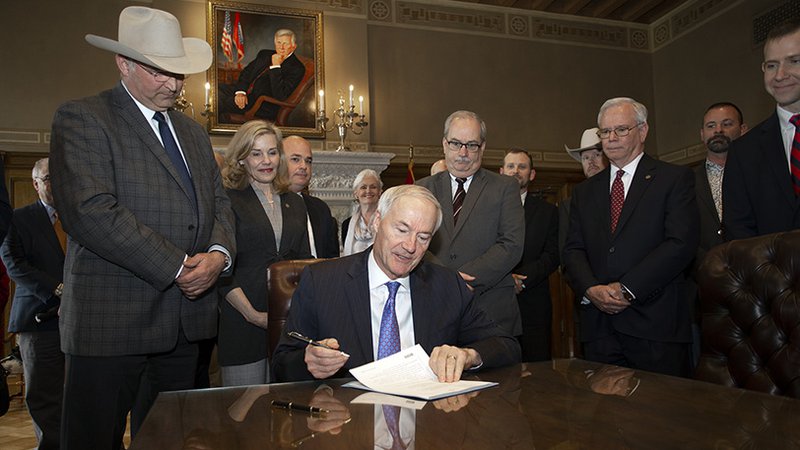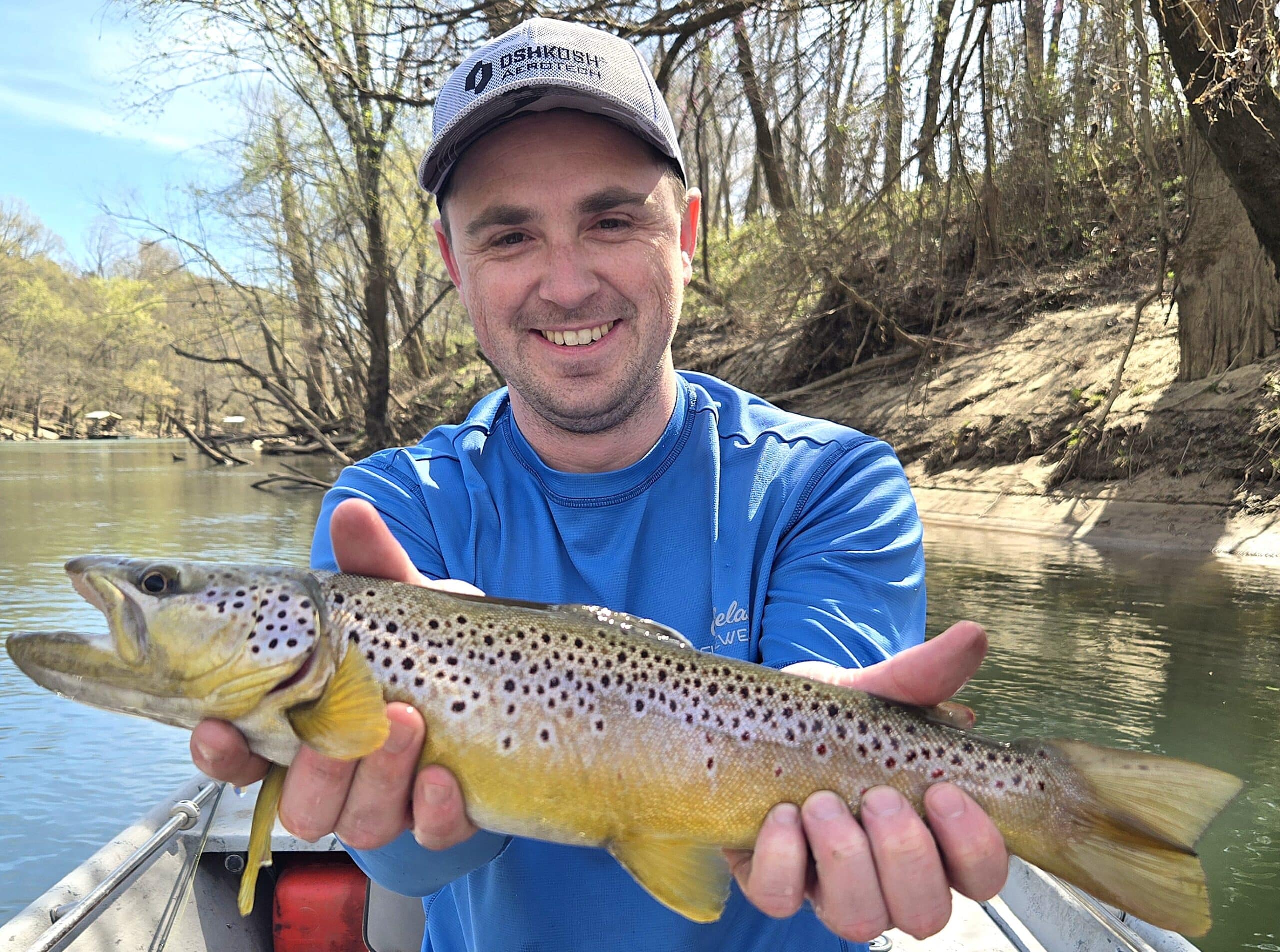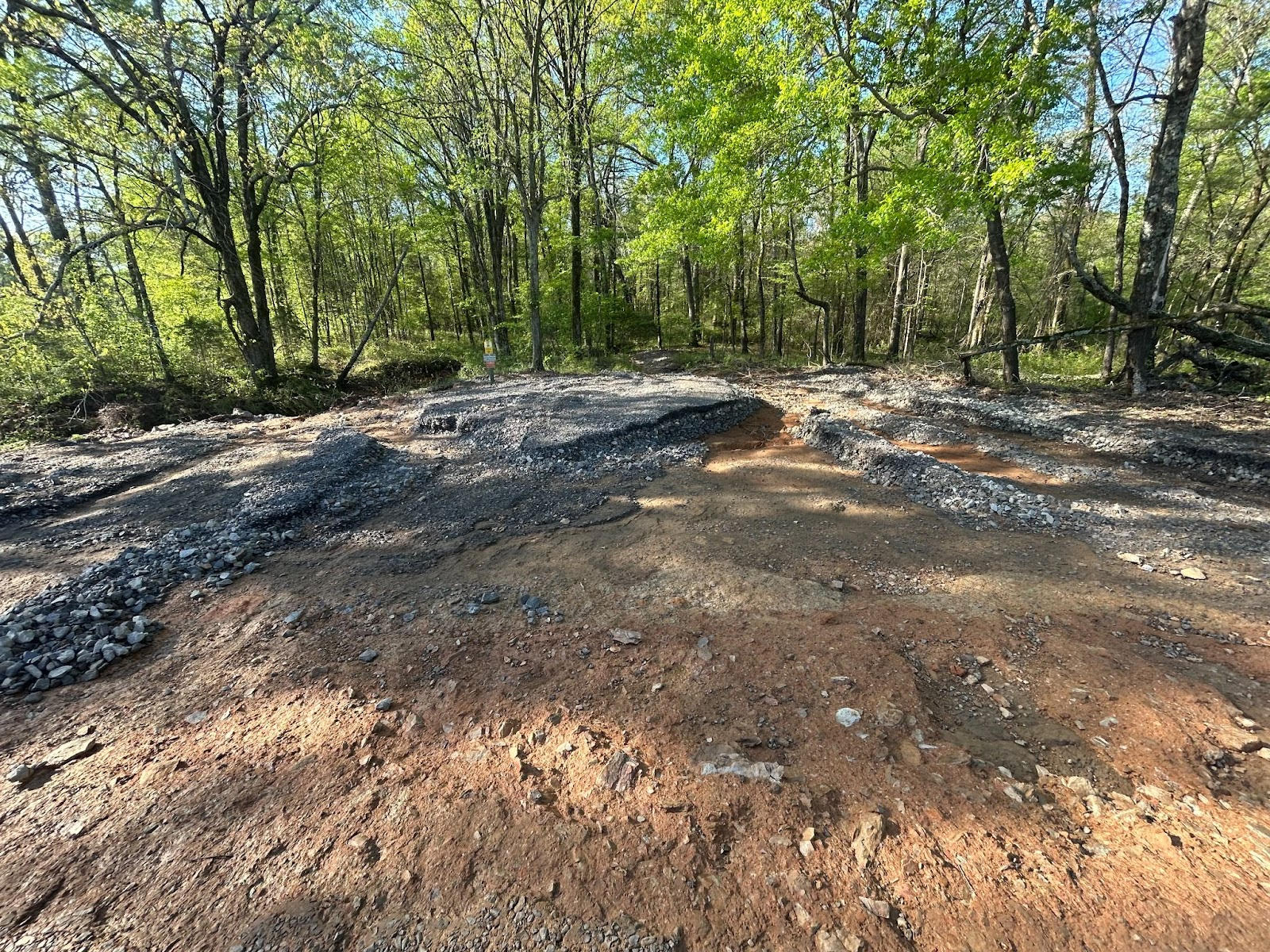Governor signs legislation to boost feral hog control
BY Jim Harris
ON 04-22-2019

April 22, 2019
Managing Editor Arkansas Wildlife Magazine
LITTLE ROCK – Arkansas’s growing battle with the overpopulating feral hog received a boost April 19 at the state Capitol when Gov. Asa Hutchinson signed Senate Bill 460 into law as Act 991 of the Arkansas General Assembly in front of members of the Arkansas Feral Hog Eradication Task Force.
Feral hogs are considered an animal nuisance species and not wildlife that would fall under the Arkansas Game and Fish Commission’s role of conservation and species management. But, AGFC Deputy Director Chris Colclasure said, “until the task force was created, we were not all working together to combat feral hogs.” Colclasure notes that feral hogs are responsible for an estimated $19 million in row crop damage in the state and $1.5 billion in damages nationwide annually. The broad state and federal task force of 22 partners “was key in getting this legislation passed,” said Colclasure, who was vice chairman of the task force.
Wes Ward, Arkansas’s secretary of agriculture and chairman of the task force, said, “Agriculture is our state’s largest industry, and feral hogs and the damage that they cause pose an increasing threat to all aspects of our state’s agriculture industry and our ability to make a living.”
Act 991 originated as Senate Bill 460, co-sponsored by state Sen. Kim Hammer, R-Benton, and Rep. Ken Bragg, R-Sheridan, and establishes a $3 million Feral Hog Eradication Fund with the Arkansas Natural Resources Commission. Also, it moves to ANRC the fines that are collected by the AGFC for illegal transport or release of feral hogs.
“They (the task force) did the lion’s share of the work and met many times,” Hammer said. “The good thing this does is it gives us a clear definition of what a feral hog is. One thing also with this, it comes with a $3 million appropriation because of some potential federal funding coming down to help out with that. That will be good to help eradicate the feral hog, as they do billions of dollars of damage around the nation and their fair share here in the state.”
The act broadens enforcement of feral hog regulations to any certified law enforcement officer. It distinguishes feral hogs from regular, owned hogs – now, all hogs must have premises identification or an official ear tag during transport.
Previously, aerial gunning of feral hogs was handled on the federal level. Act 991 creates a permit, obtainable through the Livestock and Poultry Commission and the Arkansas Agriculture Department, to allow aerial gunning, but only to address a bona fide need to kill feral hogs. That need would include protection of land, water, wildlife, livestock, domesticated animals, human life or crops. Recreational hunting would not be permitted.
Act 991 removes hunting license revocation as a consequence of citations for transporting feral hogs. However, it adds up to 90 days in prison for violations in addition to the current fine of $1,000-$5,000 per hog. Penalties for transporting feral hogs can include both a fine and prison time. The act also changes the wording from “shall” seize to “may” seize and take custody of any hog in the possession of an arrested person and may seize equipment, including without limitation a motor vehicle, trailer and trap. The modification of the law will allow flexibility for law enforcement personnel.
Important for the AGFC is that Act 991 now allows any state or federal agency to capture and radio-collar a hog for research and tracking purposes. Such collared hogs are referred to, Colclasure said, as a “Judas hog,” allowing biologists to follow one hog to a large population of them for eradication.
Because feral hogs are not considered “wildlife” by the AGFC, individuals are allowed to take a feral hog on their property at any time, Colclasure noted. There is no season on feral hogs. Harvest is not allowed on most public land, with the exception of during big game hunting seasons “which is mostly opportunistic hunting,” he said. “We don’t allow it just for the sole purpose of hog hunting. We want to remove all incentives to move hogs onto public lands.” He added that the AGFC will encourage landowners to “view feral hogs as a competitor and not as a resource and take out as many hogs as they can.”
Along with the agricultural damage caused by feral hogs, they compete for food resources with wildlife such as turkey and deer, a concern for the AGFC. They create environmental damage through the rooting process, leading to erosion into streams and other water sources. As an opportunistic animal, they are nest predators of turkey and quail nests.
Colclasure said, “And they are a significant resource burden. Because, if you think about it as an agency, we did not have to deal with feral hogs 25, 30 years ago. Now we’re trapping close to 6,000 hogs a year. That is a significant amount of manpower. The resources that it takes to buy the traps; we have about 50 traps, and those traps are not cheap. … Those are dollars that used to go to other things, whether it was quail, turkey, deer, that are now having to go to containing feral hogs. So, they’re competing not only for natural resources, but for financial resources and time resources within the agency.
“We hope through this recent legislation that we created a few more tools to combat them.”
Along with the AGFC, members of the task force are the Agriculture Department, Livestock and Poultry Commission, Natural Resources Commission, Department of Heritage, Parks and Tourism/State Parks, Department of Rural Services, Department of Health, Dog Hunters Association, Cattlemen’s Association, Association of Counties, Association of Conservation Districts, Forest Association, Pork Producers Association and Farm Bureau Federation, along with the University of Arkansas System Division of Agriculture and federal agencies USDA Forest Service-Ozark/St. Francis National Forest, Department of Agriculture-Natural Resource Conservation Service, Fish and Wildlife Service, Department of Agriculture-Wildlife Services and USDA Forest Service-Ouachita National Forest.
Stacy Hurst, director of the Arkansas Department of Heritage, told Hutchinson at the bill signing, “We have 73 natural areas and over 60,000 acres of public land. This has a great impact on us.” Jim Dailey, representing Parks and Tourism at the bill signing, said, “We have a lot of interest in this to clean up some of the problems we have with feral hogs.”
Shea Lewis, deputy director of Arkansas State Parks, told the governor, that his agency works “closely with the Arkansas Game and Fish Commission to control these issues.”
For more information on feral hogs, visit the task force home page at www.agriculture.arkansas.gov/feral-hog-eradication-task-force.
Recent News

Arkansas Wildlife Weekly Fishing Report
Apr. 10, 2025
Subscribe to Our Weekly Newsletter E-mails
Don’t miss another issue. Sign up now to receive the AGFC Wildlife Weekly Newsletter in your mailbox every Wednesday afternoon (Waterfowl Reports are published weekly during waterfowl season and periodically outside the season). Fishing Reports arrive on Thursdays. Fill in the following fields and hit submit. Thanks, and welcome!

